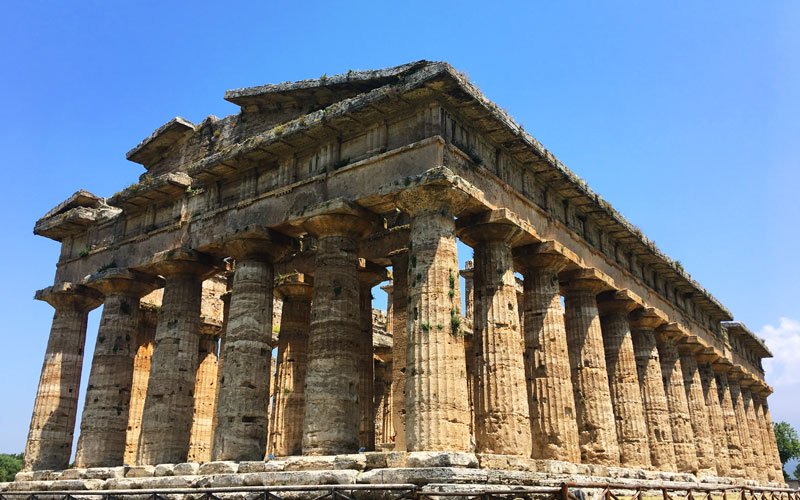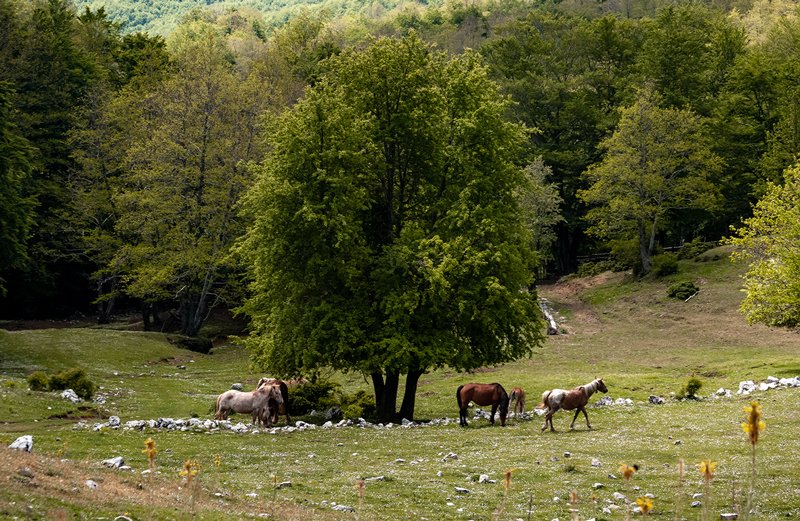"Living landscape": this marvellous definition by UNESCO explains why the Cilento, Vallo di Diano and Alburni National Park has been inscribed on the World Heritage List and why it is worth a trip. The human presence here has been uninterrupted since prehistoric times, yet the natural environment is still miraculously uncontaminated. The synergy between Man and Nature is lost in the mists of time, and created an unparalleled living landscape, where the incomparable natural heritage blends with an equally incomparable cultural heritage.
In prehistoric times, the native civilization of Cilento, called the Gaudo Culture (4th millennium BC), is the result of the melting pot between Apennine and Villanovan civilizations of the north and Nuragic, Aegean, and Mediterranean civilizations of the south.
A flint dagger and a vase from Gaudo Culture were brought to England in the 18th century by William Hamilton and are now in the British Museum.
From the Iron Age, it was the land of Osci, Ursentini, Bruttians, Morgetes, Italics, Oenotrians, Lucanians.
Then Greeks, Romans, Goths, Byzantines, Longobards, Bulgarians, Saracens, Normans, Swabians, Angevins, Aragonese, Spaniards, Austrians, French …
The signs of man and history are everywhere.
Historic centres, castles, charterhouses, abbeys, sanctuaries, museums, archaeological sites among the most important in the Mediterranean.
Hand of Man in the middle of a majestic Nature, which ranges from the auroral beauty of the dolomitic rocks along the coastline, inlets, endless beaches on the bluest of the seas, to extraordinary mountains, passing through hills covered with olive trees and vines, gorges, rivers, valleys, sinkholes, cliffs, woods, forests.

A territory that the German journalist Peter Amann likes to define “A place where Italy is still Italy”.
But Cilento is not just a physical place: it is an island of the spirit. It should not only be seen, but understood.
Cilento is still an authentic land, perhaps not perfect for the hasty hit-and-run tourists, certainly perfect for travellers who want something different from a crowded and chaotic place, for those who want to know an absolutely unique place, off the beaten path.
Here there is no orderly perfection of central Italy, nor the organization of the Romagna Coast, nor the almost mathematical precision of the nature trails of Trentino.
Here, however, time has gone by more slowly than elsewhere, the distance from large cities and the geographical isolation have made possible to preserve intact landscapes, traditions, and crops.
Cilento is still wild: that makes it so genuine.
For this reason the journalist and blogger Jennifer Dombrowski called it “Italy’s best kept secret”, even better than beautiful and much more famous (and overcrowded) destinations such as the Amalfi Coast.
As UNESCO says, “Located in the centre of the Mediterranean, it is the Park par excellence because, like this sea, it is the millenary place of environmental interpenetration and the meeting of civilizations”.
In two words, Cilento is the true old spirit of the Mediterranean.



























